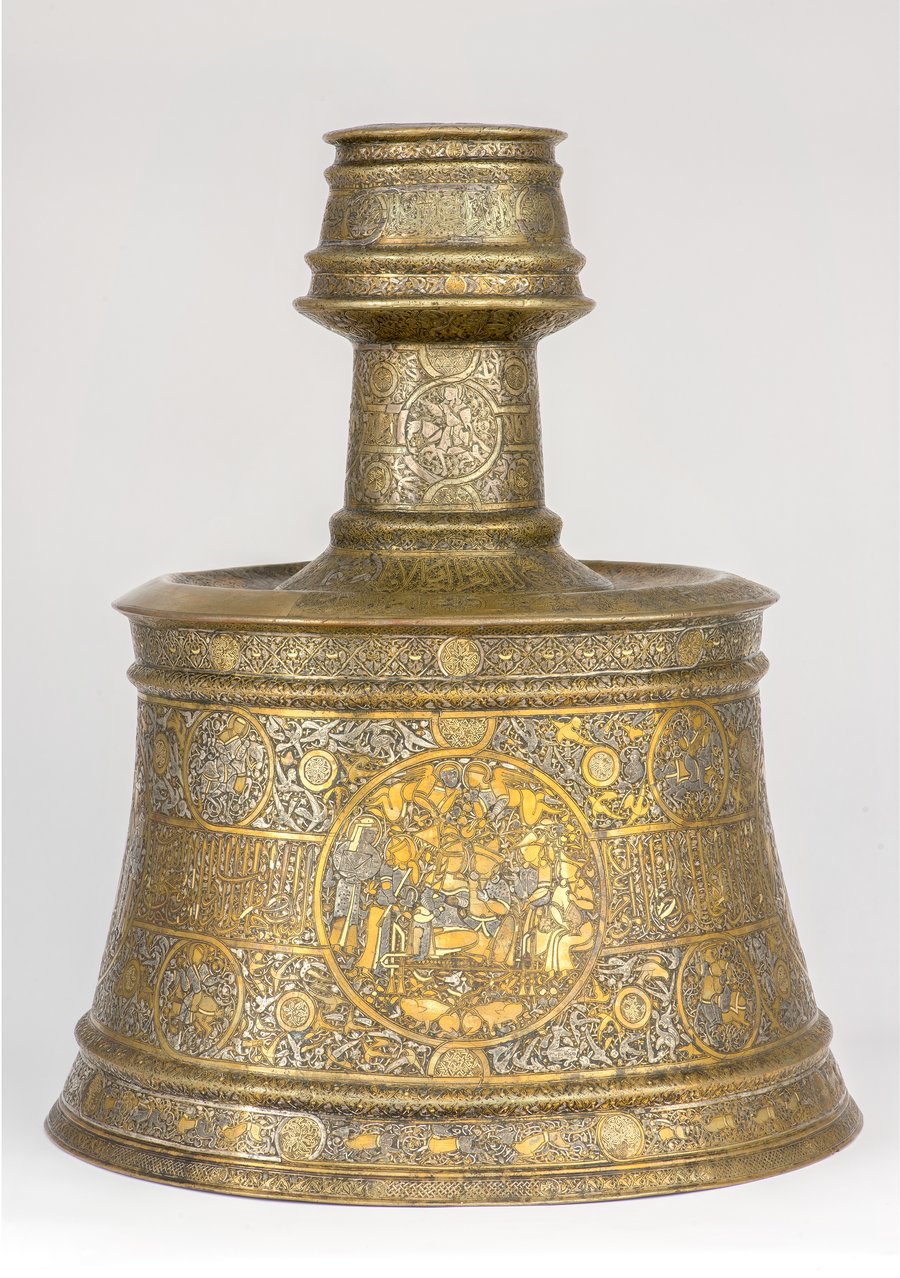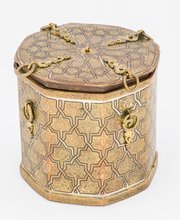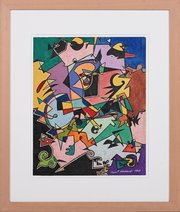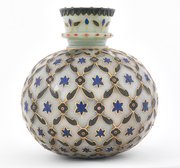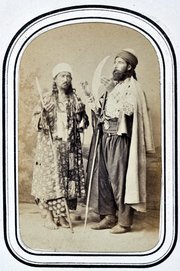
Candlestick
Museum of Islamic Art
- Title:
- Candlestick
- Artist:
- Sa'd i.
- Maker:
- Sa'd i.
- Production place:
- Shiraz
- Date:
- 1341 - 1356
- Period:
- Ilkhanid
- Title:
- Candlestick
- Artist:
- Sa'd i.
- Maker:
- Sa'd i.
- Production place:
- Shiraz
- Date:
- 1341 - 1356
- Period:
- Ilkhanid
- Material:
- Brass, Silver, Gold, Black compound, Solder
- Technique:
- Hammering, Engraving, Inlaying, Repoussé, Chasing, Gilding, Soldering
- Dimensions:
- 34.3
- Diameter:
- 28.5
This candlestick is intricately inlaid across its entire surface with gold and silver, stating the names of both its maker and owner. A fine inscription at the base of the neck names the craftsmen: “The work of the feeble slave, Sa’d ibn Abdallah. To you be glory, victory, prosperity, grace, liberality, splendour, favour, generosity and discernment;” while an inscription around the body reveals that the object was made for Abu Ishaq Inju, ruler of Fars (741-758 AH / 1341-1356 CE): “‘Glory to our lord, the most mighty king, august sultan, the learned, the just, the holy warrior, the defender, fortified from on high, al-Muzaffar Jamal al-Dawla wa’l-Din Abu Ishaq, may God make his reign everlasting.” The candlestick is decorated with alternating roundels and registers, each decorated with figural and animal representations of royal scenes, most likely of Abu Ishaq’s life. The large roundels depicting enthroned figures are believed to be Abu Ishaq and his wife, Queen Dilshad; while another roundel shows a seated woman presented with a book. This lady is thought to be Abu Ishaq’s mother, Queen Tashi, who was herself a renowned poet; the book symbolically represents her literary skills.
Abu Ishaq ruled the province of Fars in the southwest of Iran from his capital in Shiraz. While he was known for his large scale building, his mother was equally respected as a powerful ruler, who - when her husband and three sons were captured - incited the people of Shiraz to rise up against the Sheikh who held them captive. The decoration upon this candlestick honors the role women played within courtly and political life in 8th century AH/14th century CE Iran.
